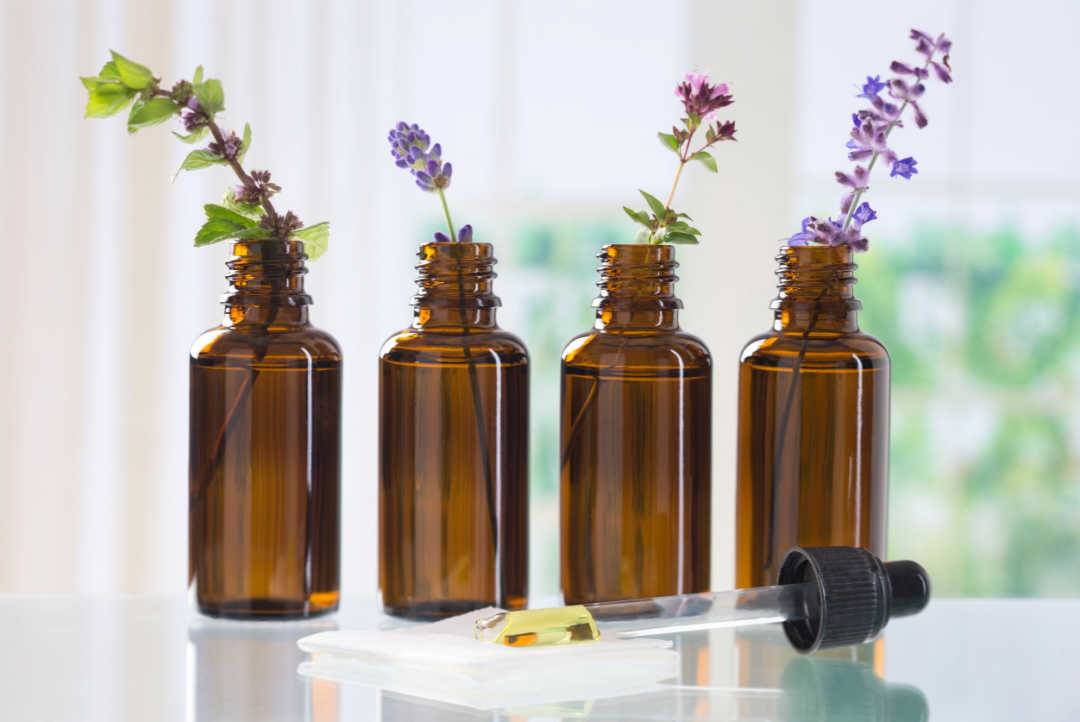
Essential oils are used in aromatherapy to promote physical and mental health. Because specific scents could have varying effects, many enthusiasts try their hand at mixing different oils. If you want to give it a try yourself, follow this step-by-step guide on mixing your own blend.
Whether you rub diluted oil directly onto the skin or inhale the vapours by diffusing it, the scents work by triggering your body’s limbic system which controls memories and emotions. This is why we often feel much better after wafting in the smell of essential oils.
Despite looking like a science project, mixing oils can be a creative endeavour. There’s a lot of trial and error involved in blending. But with some practice, you’ll eventually get the mixture that’s right for you.
Here’s everything you need to know to be an essential oil mixologist!

#1 – Use quality oils
As with most things, it’s important to use high-quality ingredients. Some essential oils may trigger an allergic reaction if they’re low quality and bulked up with other ingredients. Hence, it’s recommended that you find pure essential oils for your experiment.
You can shop online with reputable Australian suppliers such as AWO for certified organic oils, like lemongrass, that blend well with others. Pure and organic essential oils are extracted from plant compounds derived from the cold press or distillation method.
Read the labels well and watch out for indications that the product isn’t pure. If it has the scientific name of the plant or herb, it should be fine to use as long as it doesn’t have additives. Don’t forget to do a patch test to ensure that your skin doesn’t respond negatively.
#2 – Identify the effect you’re after
As mentioned earlier, your chosen oil may have a particular effect on you. Therefore, you should decide what outcome you want before you begin mixing essential oils. This list will help you match the effect with the type of oil:
- To calm and improve mood: Lavender, rose, sandalwood, chamomile, jasmine, bergamot and ylang-ylang
- To energise: Eucalyptus, lemongrass, ginger, tea tree, spearmint, pine, rosemary, lemon and basil
- To reduce anxiety: Jasmine, lavender, rose, sandalwood, tangerine, black pepper and marjoram
- To detoxify and aid digestion: Lemon, peppermint, grapefruit, rosemary, laurel and juniper
Essential oils within the same category should work well if you blend them into one mixture. Also, if you notice, some oils promote more than one effect. By mixing these oils, you may receive several different results at once when you inhale their scents.
#3 – Dilute the essential oils
You need to dilute essential oils because undiluted oil is potent and so strong that it may cause irritation, burns, or internal systemic toxicity. Even mild scents most people are used to, like lavender or mint, can be too harsh on the skin.
So, you must dilute essential oils every time you use them, whether for direct application or when adding to a beauty regimen such as DIY body scrubs.
You’ll need a carrier oil to dilute an essential oil. The general rule is to add 30ml of carrier oil for every 12 drops of essential oil. Some well-known examples of carrier oils are:
- Jojoba
- Coconut
- Sunflower
- Avocado
- Olive
- Sweet almond
You can also follow a particular ratio, depending on how often you use the oil. A 1%-2% dilution is appropriate for daily or long-term use. A 3% dilution is suitable for oils that will target a specific problem area. Meanwhile, a 5% or a 10% dilution is for short-term use for small areas of concern.
#4 – Start mixing
Blending essential oils is similar to making perfume. You have to consider aromatic top, middle and base notes, and test different blends until you come up with your preferred scent. Generally, you’ll need two top notes, two middle notes and one base note. So, you may have as few as three oils and, at most, five.
Put one drop of each essential oil on a perfume testing strip, observe and take notes. You should be able to describe its fragrance, its strength and its evaporating time. Another crucial element is how the scent affects your body.
It’s now time to mix when you’ve chosen your essential oils. Here’s a basic formula:
- First, prepare a 15 mL amber glass bottle with a cork stopper. Fill this almost to the brim with your preferred carrier oil.
- Next, put one drop of each essential oil. Before anything else, observe how it smells.
- Adjust the scent as needed. A 2.5%-3% is the safest dilution ratio. You may add up to a total of 8 drops of oil each.
Don’t worry if you don’t get a perfect blend the first few times. Mixing essential oils doesn’t always work out 100%. Remember to store your new mixture properly, preferably in a cool, dry and dark place.
Also, clean your oil diffuser before using it to diffuse the blended oils. Otherwise, the scent of the old essential may tamper with the smell of the new blend.

No Comments